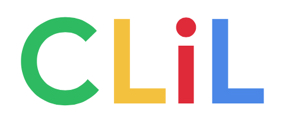
First course's students of Secondary Education are supposed to know how to read, produce and understand this narrative texts. They also have to be able to identify and use properly the features, components, resources and functions of narrative texts. Nevertheless, the subject syllabus include comics inside this sort of text. As graphic storytelling has its own components and terminology that is going to be introduced in this lesson step by step. First of all, we will explain its main features. Secondly, we are going to develop some specific vocabulary. Finally we will create one by ourselves.
First of all, what is a comic? It is a type of graphic storytelling technique that uses both images and words. It means that it is a visual resource and a narrative text at the same time. Unfortunately, comics are thought to be only for boys, specially children or weird adults. Commonly, people think their stories only tell about superheroes. That’s totally wrong! Comics can be read by everybody at any age! There’re different kinds of comics for kids and for adults depending on their origin or their length: manga, graphic novels, superheroes series, adventures sagas, comic strips... For instance: comics strips are short comics that usually tell funny brief stories. Usually, they don’t have more than 5 panels. If a comic is published online we can call it webcomic. As in traditional narrative texts, stories in a comic has the structure: introduction of the characters and description of a situation, the introduction of a problem, the resolution and the denouement.
Secondly, we are going to explain some specific vocabulary about graphic storytelling. The cartoons, or drawings, are inside squares and rectangles, but they could be also in circles and in any other shape. These are called panels. Inside each panel there’s an image representing a part of the story. The act of choosing some prime moments is the encapsulation. Also, a group of panels one behind another is called tier. Between panels there’s an empty space named gutter. The reader’s mind tends to fill in the empty spaces with the information that’s missing. This action’s the closure. The dialogues said by the characters are inside speech bubbles and the narrative sequences are surrounded by rectangles called captions. A kind of written or drawn word in comics which express sound and noises. It’s called sound effect or onomatopoeia. In comics usually appear spreads: images that span more than one page.
In conclusion, making a comic needs a huge variety of functions such as writer (in charge o writting the plots and dialogues) penciller (who draws the panels, the scenes and the characters) inker (who "finishes", and sometimes enhances, the pencilled artwork using ink and a pen or brush to create a high-contrast image for photographing and printing), colourist (in charge of the color and painting) and the letterer (is the person who fills the speech ballons and captions with the dialogue and other words).
© Copyleft 2016, Content and Language Integrated Learning and ICT Group